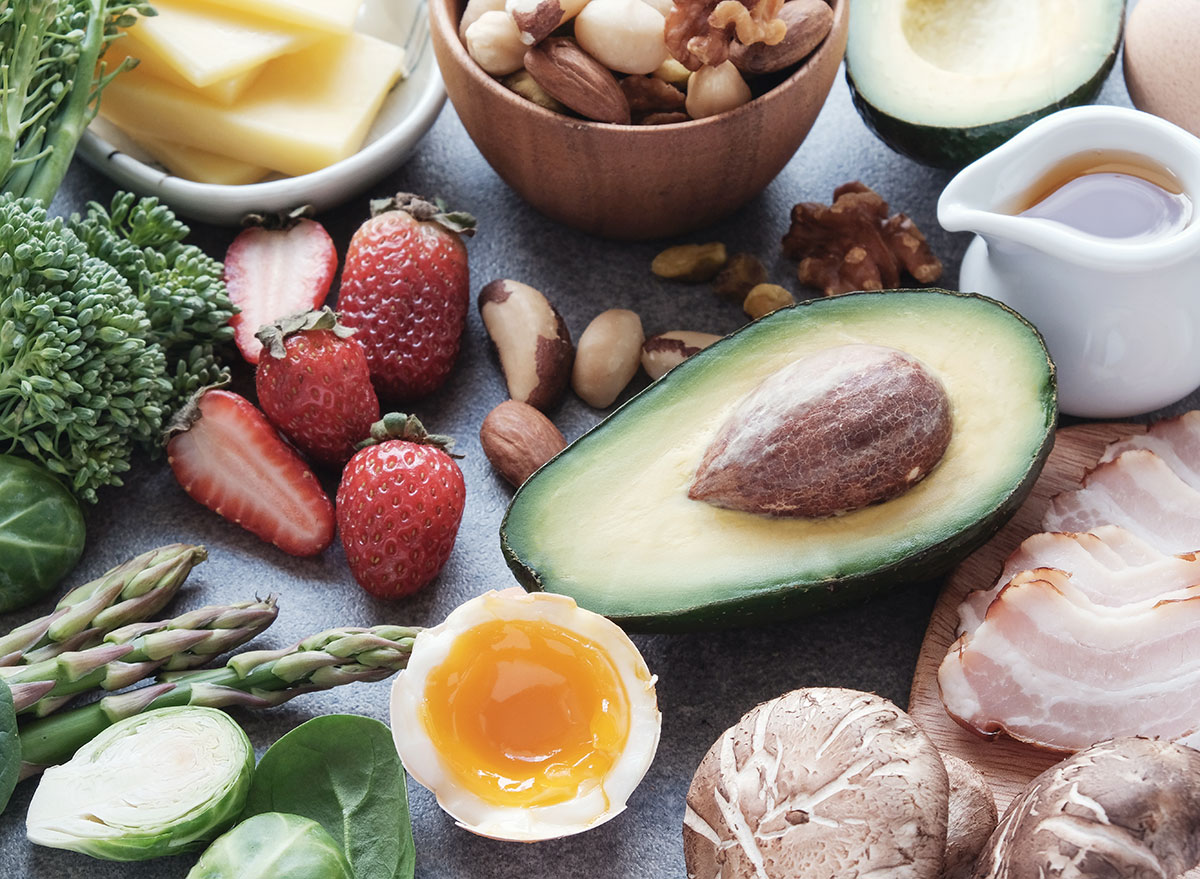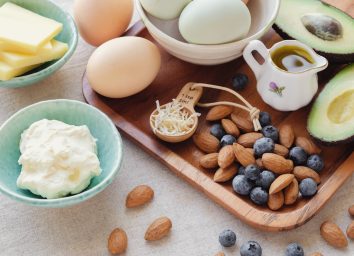Keto vs. Atkins: Know Which Low-Carb Diet Is Right for You

When it comes to low-carb diets, there are most likely two that come to mind: keto and Atkins. But in the keto vs. Atkins debate, is there really a difference? And if there is, is one better for you than the other?
The two diets are easy to confuse because they both are low carb diets and both can allow the body to enter into a state of ketosis. However, the diets are not interchangeable. Sharon Brown, clinical nutritionist and founder of frozen bone broth company Bonafide Provisions and Maryann Walsh, MFN, RD, CDE explain how the keto and Atkins diet actually differ.
Keto vs. Atkins diet: What are the main differences?
The main difference between the keto diet and the Atkins diet lies within the reason why each diet was originally created. The keto diet—which is short for ketogenic—was originally popularized as a therapy for epilepsy in the 1920s and 30s, not a weight loss program.
"It was developed to provide an alternative to fasting, which also pushes the body into a state of ketosis and had demonstrated success as an epilepsy therapy," explains Brown.
The Atkins diet, on the other hand, didn't come to fruition until 1972. Cardiologist Dr. Robert C. Atkins created this low carbohydrate diet to promote and expedite weight loss.
Walsh adds that the keto diet encourages consumption of more natural, non-nutritive sweeteners such as monk fruit and stevia instead of products with artificial sweeteners such as aspartame or sugar alcohols that can cause gastrointestinal discomfort including maltitol. The Atkins diet doesn't place as much emphasis on natural ingredients, as long as the product is low carb.
What is the keto diet?
"Technically speaking, a ketogenic diet is any diet that restricts carbohydrates and protein to a level that pushes the body into a state of ketosis—these levels can be different based on individual carbohydrate tolerance," says Brown.
It's no wonder why there is confusion between the two diets. The definition of the ketogenic diet could be equated to the Atkins diet.
"However, the traditional ketogenic diet, as used for the treatment of epilepsy, is comprised of 75-80 percent fat, 20 percent protein, and 0-5 percent carbohydrates," she clarifies.
The keto diet requires a high fat intake, moderate protein intake, and minimal carbs and is unchanging. The Atkins diet is structured differently.
What is the Atkins diet?
This low carbohydrate diet has three key phases: induction, on-going weight loss, and pre-maintenance. Oftentimes you'll hear about a fourth stage, which refers to maintenance.
"The introduction phase can be classified as a traditional ketogenic diet restricting carbohydrates to 15-20 grams per day, or about 0-5 percent of daily caloric intake for most people," says Brown.
The second stage allows between 15 and 40 grams of carbohydrates per day which Brown points out could have a ketogenic effect for some people, but again, is different from the traditional keto diet.
Brown says the third stage allows you to increase your carb intake by 10 grams per week until you level out at around 40-60 grams of carbs per day. However, others can go up to 100 grams of carbs per day depending on their weight loss goals.
Walsh says the main focus of the Atkins diet is limiting carbs without restricting protein as much as someone following the keto diet. As a result, though, it makes it difficult for someone following the Atkins diet to stay in ketosis as 50-60 percent of the protein turns into glucose (sugar).
Is one diet more effective than the other?
Brown says that the traditional ketogenic diet is the best approach for treating epilepsy, whereas the Atkins diet may be a better long-term approach for keeping weight off. Since the keto diet is so restrictive, it's difficult for many to maintain.
Ultimately, both diets are effective for weight loss, it just comes down to what you want to gain from the diet.
"The keto diet is favorable for those who desire to enter the state of ketosis and reap the benefits of it beyond weight loss," says Walsh.
The Atkins diet allows for more flexibility on carb intake, but the carb restriction on the keto diet boots mental clarity, clearer skin, and promotes satiety.
Which diet do you prefer?
Both Brown and Walsh prefer the keto diet over the Atkins diet for similar reasons.
"The Atkins Diet, as it is known today, has morphed from a diet that prescribed eating whole foods found in nature—meat, fish, full-fat dairy, and green vegetables—into a branded line of products that are meant to imitate foods that are not part of a low carb, or any whole foods-based diet," says Brown.
Foods like cookies, muffins, and bars are labeled as low carb but in return are heavily processed and loaded with additives and artificial ingredients. As a result, low-carb natural foods are sacrificed for brand name products.
"The modern Atkins Diet is less about eating real food and more about buying products with the Atkins name and eating anything that fits the macros," says Brown. "The approach to keto, Atkins, or, any diet for that matter, needs to be a whole food approach where the diet is comprised of foods that come from nature, not labs or factories."
As mentioned above, a lot of Atkins diet products contain large amounts of sugar alcohols to substitute sugar, primarily one called maltitol which Walsh says is known for kindling gastrointestinal discomfort. Another reason she prefers the keto diet over the Atkins diet is that there is a greater market for keto-friendly products.
"While preparing meals and snacks with fresh vegetables, meats, and cheeses are encouraged in both diets, it's much easier for consumers to find keto-friendly meal replacements and snack products as there are currently many options by numerous brands at all different price points available due to keto's current high popularity," says Walsh.
Bottom line.
To review, the keto diet calls for high consumption of fat, moderate consumption of protein, and minimal to no carbs. The main goal of the keto diet is to promote and maintain a constant state of ketosis which has many health benefits, the top one being a treatment for epilepsy. The Atkins diet, on the other hand, is split into phases, the first of which mirrors a ketogenic effect, but allows for more carbs by phases two and three. While both diets are effective means of weight loss, it's important that you take a step back and look at what foods
"Whatever food program you choose, always take a whole food, grown by nature, approach," says Brown. "Your body is a machine, designed to be fueled by food first."








